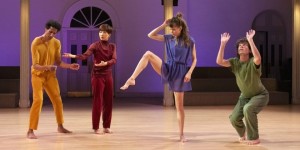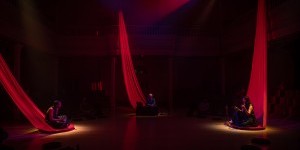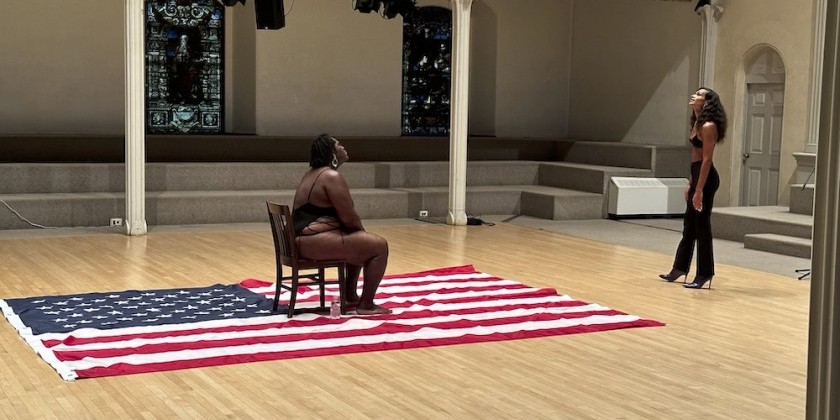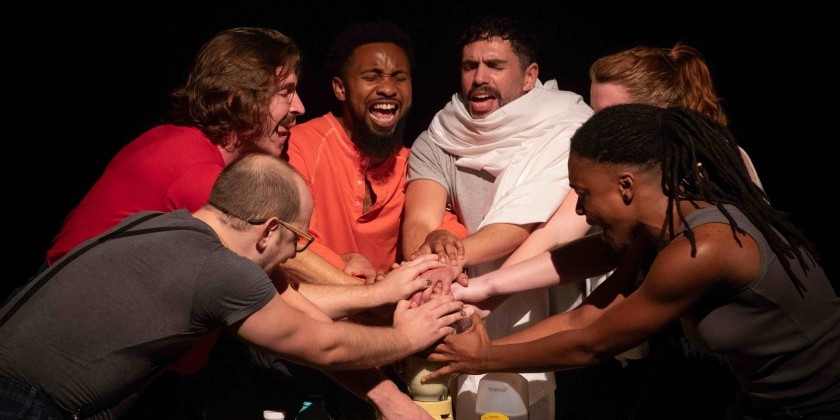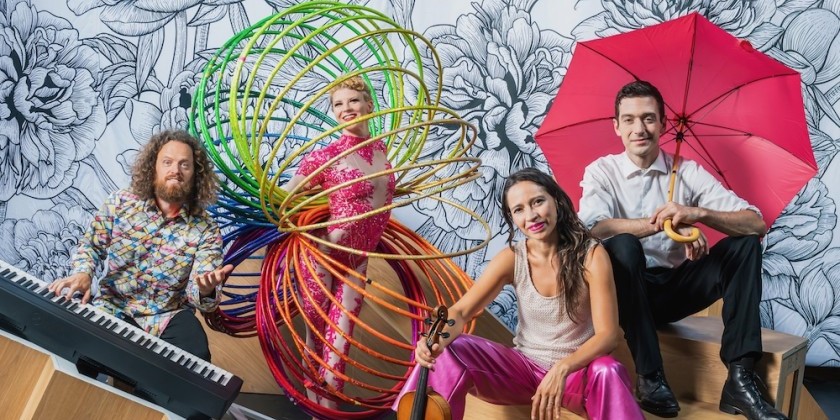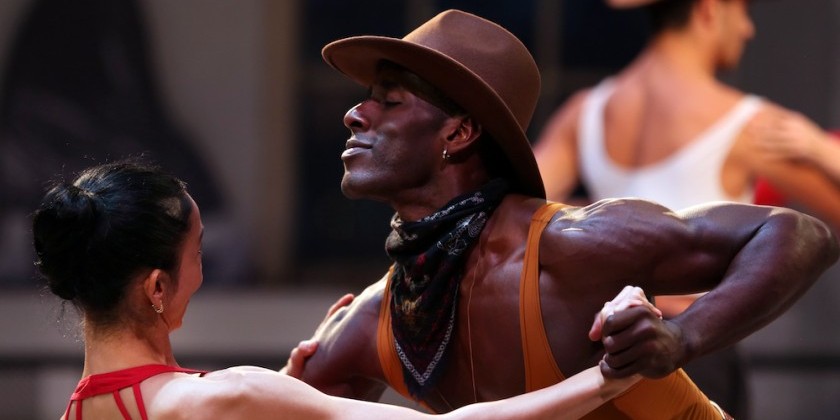IMPRESSIONS: BodyStories: Teresa Fellion Dance at Danspace Project
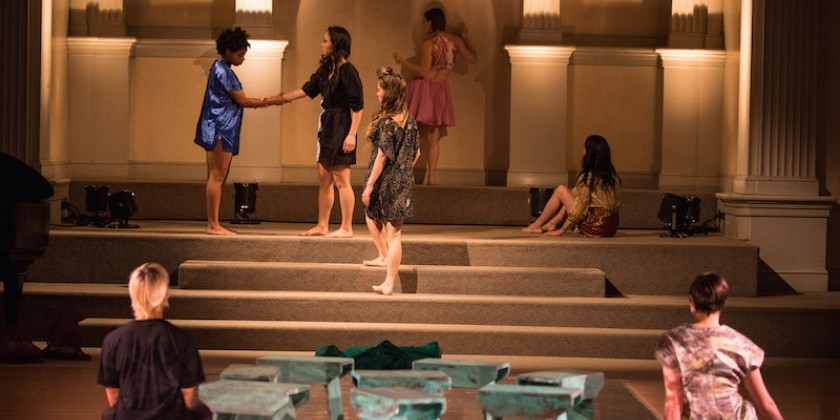
Works: rose walk green ice (Teresa Fellion Dance) and Trashed (Winifred Haun and Emma Serjeant)
Thursday, December 7, 2017
Performance: (rose walk green ice): Maria Garder, Amanda Krische, Kimberly Murry, Elizabeth Shaw, Jessica Stroh, Ashley Zimmerman
(Trashed): Dexter Bishop, Solomon Bowser, Ariel Dorsey, Michael Gee, Talia Koylass, Mandy Milligan, Kalea Norwood, and Summer Smith
Original Music: John Yannelli and Glenn Alexander
Costume Design: Nina Katan
Set Design: Nina Alexander, Robert Gould, Teresa Fellion
Projection Design: Charly Wenzel
Lighting Design: Timothy Cryan
BodyStories: Teresa Fellion Dance presents two works at Danspace Project: one dynamic world premiere and one that feels like a tacked-on afterthought. While guest artist Winifred Haun and Dancers’ Trashed, a collaboration with Circus Artist Emma Serjeant, is clever and visually appealing, it can’t compete with Fellion’s rose walk green ice, which offers a complex mosaic of colorful ideas and images.
It is difficult to pinpoint when rose walk green ice begins. John Yannelli and Glenn Alexander’s ambient composition plays as we enter St. Mark’s Church in-the-Bowery, a majestic space with the audience on three sides. The cast of six is positioned on stairs leading up to the alter. Slowly their systematic pedestrian movements — sitting, standing, shifting, crouching, kneeling — gain momentum and become recognizable as a dance. Simple chain reactions hypnotize; one person standing is the impetus for another to walk.
A semicircle of chairs faces the altar, eight “premium” audience seats that obscure our view of the dancers. As the work develops, the performers manipulate these audience members into different formations by displacing them and moving their seats, creating fascinating visual filters. Because of the pedestrian costumes, it is easy to lose track of who is dancer and who is audience.
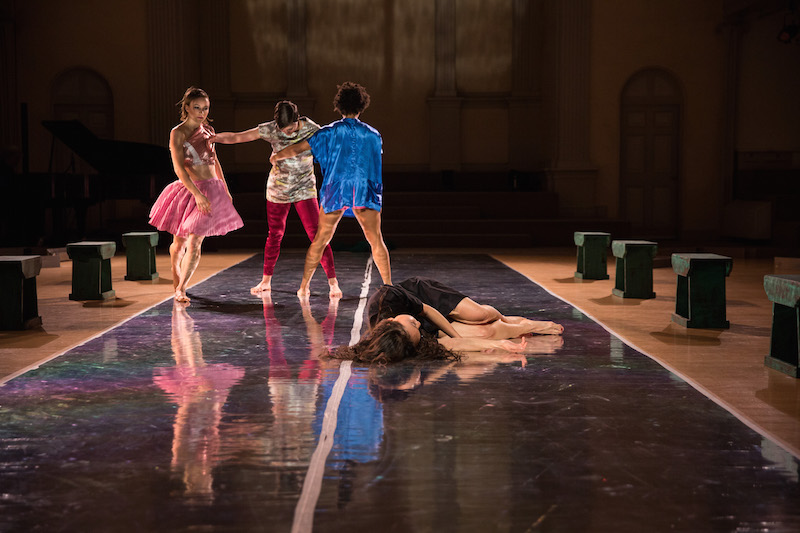
As in a science fiction movie, rose walk green ice offers images, which bear likeness to our world, but are somehow misplaced. A dancer in a pink dress lies immobile, as though sedated — what happened to her? Another dancer enters in a purple tulle headdress —why? These mysterious details somehow conform to the bizarre world created by the piece. Fellion keeps us guessing.
During a turning point, the lights dim, and the dancers move the select audience into a circle, surrounding them in an almost threatening manner. One dancer approaches the others with an extended hand, as though casting a spell. Projections against the back wall constantly shift, and we feel like we are in a dimly lit attic, imagining shadows turning into monsters.
Throughout the piece, clear and memorable sections intersect with more nebulous ones where the vibrant imagery loses impetus. These instances increase in frequency as the piece progresses, causing it to feel unnecessarily long, a heaviness that is facilitated by the music’s driving repetitiveness. Finally, the dancers finish on the outskirts of the performance space in an ending that feels like more of a pause, as no real climax has been reached. Though it seems like the strange world of rose walk green ice continues on without our attention, we’re ready for the piece to be over.
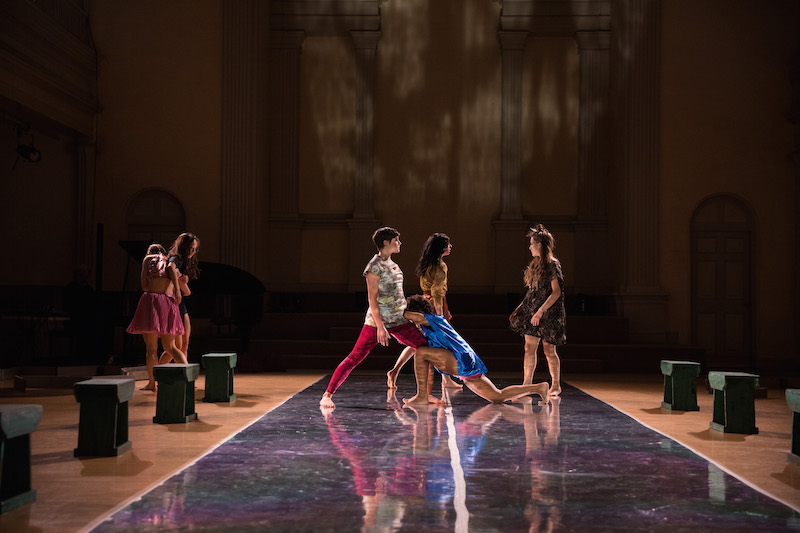
Trashed displays clever patterns and tableaus of bodies. In comparison to the intricate work preceding it, Trashed feels two-dimensional, but in a quaint, pleasing way, like watching an old cartoon.
As though mimicking the argyle and houndstooth patterns on their costumes, the individual dancers come together to generate larger textures. Often, the entire group supports one person. In an animated montage, a woman walks carefully across a line of dancers lying face-up on the floor, stepping into their outstretched hands; then she somersaults back the way she came as they support her.
Clear lines and formations emerge from chaos before devolving once again. This theme is clarified when an offstage narrator tells stories about how clutter has affected his life, and how that clutter eventually represented his neglect for his emotions.
This account is disappointing; it explicates the piece’s purpose, and our opportunity to infuse meaning gets lost. We feel like we are being taught a lesson, one we didn’t ask for.
BodyStories: Teresa Fellion Dance is presented as Danspace Project’s Community Access Series, which provides subsidized, off-season rental opportunities for Danspace Project Community Members.






